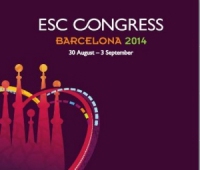ESC 2014.
The most relevant presentations from ESC 2014 - Aug.30-Sep.03, Barcelona, Spain.
If you cannot view the articles, click here

ODYSSEY LONG TERM: Safety and efficacy of long-term alirocumab
This was a prospective, randomized, controlled study comparing monoclonal antibody alirocumab with placebo in patients with hypercholesterolemia and high cardiovascular risk. At 24 weeks follow-up ...
This was a prospective, randomized, controlled study comparing monoclonal antibody alirocumab with placebo in patients with hypercholesterolemia and high cardiovascular risk. At 24 weeks follow-up ...

PARADIGM-HF: New family of drugs for chronic heart failure
Therapy in heart failure has been to focus the neurohormonal pathways such as the renin-angiotensin-aldosterone system. Natriuretic peptides are metabolized by neprilysin enzyme. The LCZ696 is a new ...
Therapy in heart failure has been to focus the neurohormonal pathways such as the renin-angiotensin-aldosterone system. Natriuretic peptides are metabolized by neprilysin enzyme. The LCZ696 is a new ...

CONFIRM HF: Is it safe to replace intravenous iron in patients with chronic heart failure
This study aimed to assess whether iron replacement versus placebo could improve physical activity in patients with chronic heart failure and iron deficiency. 150 patients for the Iron group and 151 ...
This study aimed to assess whether iron replacement versus placebo could improve physical activity in patients with chronic heart failure and iron deficiency. 150 patients for the Iron group and 151 ...
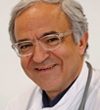
NECTAR HF: Chronic vagal stimulation for heart failure with low ejection fraction
The increased sympathetic activity and reduced parasympathetic tone are important pathophysiological contributors to the progression of heart failure and are associated with a worse prognosis. The ...
The increased sympathetic activity and reduced parasympathetic tone are important pathophysiological contributors to the progression of heart failure and are associated with a worse prognosis. The ...
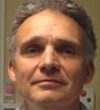
POPE-2: Colchicine to prevent pericardial effusion after cardiac surgery
The incidence of asymptomatic pericardial effusion after cardiac surgery is high. The aim of this study was to evaluate whether colchicine would be able to reduce the volume of postoperative ...
The incidence of asymptomatic pericardial effusion after cardiac surgery is high. The aim of this study was to evaluate whether colchicine would be able to reduce the volume of postoperative ...

MORE-CRT: Cardiac resynchronization with quadrupole electrode reduces complications
In approximately 10% of patients for resynchronization therapy implantation of ventricular lead is not possible for anatomical difficulties, by phrenic hyper-stimulation or low stimulous ...
In approximately 10% of patients for resynchronization therapy implantation of ventricular lead is not possible for anatomical difficulties, by phrenic hyper-stimulation or low stimulous ...

COPPS-2: Colchicine for prevention of post-pericardiotomy syndrome and postoperative atrial fibrillation
180 patients with colchicine 0.5 mg twice daily from 48-72 hs. before surgery versus 180 patients to placebo were randomized. The medication was continued for a month. The aim of the study was to ...
180 patients with colchicine 0.5 mg twice daily from 48-72 hs. before surgery versus 180 patients to placebo were randomized. The medication was continued for a month. The aim of the study was to ...

SOLID-TIMI 52: Darapladib to reduce new cardiovascular events after myocardial infarction
This study randomized 1: 1 patient who had been hospitalized for acute coronary syndrome within 30 days after entry to darapladib versus placebo study. A total of 6504 patients were included in the ...
This study randomized 1: 1 patient who had been hospitalized for acute coronary syndrome within 30 days after entry to darapladib versus placebo study. A total of 6504 patients were included in the ...

ODYSSEYCOMBO II: Alirocumab more effective than ezetimibe when statins are insufficient
The aim of the study was to show a reduction in LDL cholesterol with the use of monoclonal antibody alirocumab as an adjunct therapy to statins in patients already receiving the maximum tolerated ...
The aim of the study was to show a reduction in LDL cholesterol with the use of monoclonal antibody alirocumab as an adjunct therapy to statins in patients already receiving the maximum tolerated ...

SIGNIFY: Ivabradine does not reduce events in patients with stable coronary disease
The increase in heart rate in the setting of chronic coronary artery disease is associated with poor prognosis, especially increased risk of acute myocardial infarction. Reducing heart rate with ...
The increase in heart rate in the setting of chronic coronary artery disease is associated with poor prognosis, especially increased risk of acute myocardial infarction. Reducing heart rate with ...
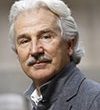
ODYSSEY FH I and FH II: Alirocumab in patients with heterozygous familial hypercholesterolemia
The study included patients with a diagnosis of heterozygous familial hypercholesterolemia who were receiving the maximum tolerated dose of randomized statin alirocumab 75 mg subcutaneously every ...
The study included patients with a diagnosis of heterozygous familial hypercholesterolemia who were receiving the maximum tolerated dose of randomized statin alirocumab 75 mg subcutaneously every ...
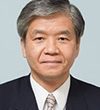
LISTEN: Rosuvastatin versus atorvastatin in Japanese diabetic patients
The treatment of hyperlipidemia is useful in primary and secondary prevention of chronic heart disease and stroke, particularly in diabetic patients. Many statins may interfere with glycemic profile ...
The treatment of hyperlipidemia is useful in primary and secondary prevention of chronic heart disease and stroke, particularly in diabetic patients. Many statins may interfere with glycemic profile ...
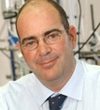
NONI: Inhaled nitric oxide to reduce reperfusion injury in myocardial infarction
Infarct size is an independent predictor of survival and ventricular function. Several alternatives have been tried to reduce the size of the infarcted area and its consequences. Small pilot ...
Infarct size is an independent predictor of survival and ventricular function. Several alternatives have been tried to reduce the size of the infarcted area and its consequences. Small pilot ...

BIOSCIENCE study: Absorbable polymer versus permanent in sirolimus-eluting stents
This multicenter study randomized 1063 patients to receive the sirolimus-eluting stent with absorbable polymer and 1056 patients to permanent polymer stent. No differences in stent thrombosis (3.4% ...
This multicenter study randomized 1063 patients to receive the sirolimus-eluting stent with absorbable polymer and 1056 patients to permanent polymer stent. No differences in stent thrombosis (3.4% ...
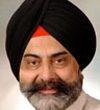
ANTHEM-HF: autonomic regulation to improve ventricular function
In the context of heart failure, there is an autonomic imbalance characterized by increased sympathetic activity and decreased parasympathetic activity. This autonomic imbalance may contribute to ...
In the context of heart failure, there is an autonomic imbalance characterized by increased sympathetic activity and decreased parasympathetic activity. This autonomic imbalance may contribute to ...
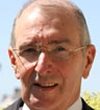
BIOPACE STUDY: biventricular pacing to prevent cardiac desynchronization
Single chamber pacemaker implantation leads to a desynchronization of ventricular depolarization. This study aims to evaluate the implant of biventricular versus univentricular pacemaker. 902 ...
Single chamber pacemaker implantation leads to a desynchronization of ventricular depolarization. This study aims to evaluate the implant of biventricular versus univentricular pacemaker. 902 ...
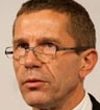
CRT-D: Comparison between septum stimulation or right ventricle in patients receiving resynchronization.
Resynchronization therapy is a strategic therapeutic recommended in patients with ventricular dysfunction and prolonged QRS, but only two-thirds of patients have echocardiographic improvement. The ...
Resynchronization therapy is a strategic therapeutic recommended in patients with ventricular dysfunction and prolonged QRS, but only two-thirds of patients have echocardiographic improvement. The ...

STAR AF 2: Comparison between ablation techniques of the atrial fibrillation
This paper compares the circumferential ablation technique to isolate pulmonary veins, the ablation technique with a hybrid (linear) technique and the isolation technique of the pulmonary veins in ...
This paper compares the circumferential ablation technique to isolate pulmonary veins, the ablation technique with a hybrid (linear) technique and the isolation technique of the pulmonary veins in ...
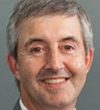
EUROECO: Safety and cost effectiveness of new home monitoring device
Home monitoring is essential in modern medicine, but the cost-benefit analysis is essential for patients, insurance companies, and administrators. Domiciliary monitoring service by BIOTRONIK allows ...
Home monitoring is essential in modern medicine, but the cost-benefit analysis is essential for patients, insurance companies, and administrators. Domiciliary monitoring service by BIOTRONIK allows ...

CULPRIT: Complete revascularization versus culprit artery of infarct only
Current guidelines suggest treating only the culprit artery of myocardial infarction with ST-segment elevation. This prospective and randomized work included 296 patients in 7 centers suffering ...
Current guidelines suggest treating only the culprit artery of myocardial infarction with ST-segment elevation. This prospective and randomized work included 296 patients in 7 centers suffering ...

FAMOUS NSTEMI: FFR versus Angiography in non-ST segment elevation myocardial infarction
The benefit of myocardial revascularization (angioplasty or surgery) guided by fractional flow reserve (FFR) in the context of acute coronary syndromes is poorly studied in the literature. ...
The benefit of myocardial revascularization (angioplasty or surgery) guided by fractional flow reserve (FFR) in the context of acute coronary syndromes is poorly studied in the literature. ...
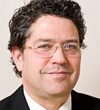
MITOCARE: TRO40303 intravenous infusion in the context of primary angioplasty
Prospective, multicenter, randomized, double-blind study evaluated intravenous infusion of TRO40303 versus placebo administered immediately before balloon dilation of the culprit artery during ...
Prospective, multicenter, randomized, double-blind study evaluated intravenous infusion of TRO40303 versus placebo administered immediately before balloon dilation of the culprit artery during ...
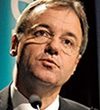
ATLANTIC: administration of ticagrelor in the ambulance versus in the cath lab
The platelet P2Y12 receptor antagonist ticagrelor is shown to reduce the incidence of cardiovascular events when administered in hospital admission to patients suffering an ST-segment elevation ...
The platelet P2Y12 receptor antagonist ticagrelor is shown to reduce the incidence of cardiovascular events when administered in hospital admission to patients suffering an ST-segment elevation ...

STICS: perioperative statins to prevent atrial fibrillation
The aim of this study was to test whether perioperative treatment with rosuvastatin 20 mg could prevent the incidence of postoperative atrial fibrillation and reduce myocardial damage in patients ...
The aim of this study was to test whether perioperative treatment with rosuvastatin 20 mg could prevent the incidence of postoperative atrial fibrillation and reduce myocardial damage in patients ...

X-Vert: Rivaroxaban in patients with atrial fibrillation undergoing elective cardioversion
This study included 1504 patients with atrial fibrillation and indication for elective electrical cardioversion who were randomized to rivaroxaban (n = 1002) versus Marevan (n = 502). The ...
This study included 1504 patients with atrial fibrillation and indication for elective electrical cardioversion who were randomized to rivaroxaban (n = 1002) versus Marevan (n = 502). The ...

AMIO-CAT: Amiodarone after ablation of atrial fibrillation
Early recurrence of atrial fibrillation after ablation is an experience that discourages patients. The aim of this study was to analyze the overall effectiveness of amiodarone for a short time after ...
Early recurrence of atrial fibrillation after ablation is an experience that discourages patients. The aim of this study was to analyze the overall effectiveness of amiodarone for a short time after ...

IBIS 4: intensive treatment with statins after ST-segment elevation myocardial infarction
Statins may help stabilize the atherosclerotic plaque in acute myocardial infarction. 103 patients who underwent primary angioplasty followed by coronary intravascular ultrasound (IVUS) in the ...
Statins may help stabilize the atherosclerotic plaque in acute myocardial infarction. 103 patients who underwent primary angioplasty followed by coronary intravascular ultrasound (IVUS) in the ...

IMPI: Prednisolone for tuberculous pericarditis
Tuberculous pericarditis is associated with high morbidity and mortality. This study included 1400 patients with definite or probable tuberculous pericarditis to receive prednisolone or placebo for ...
Tuberculous pericarditis is associated with high morbidity and mortality. This study included 1400 patients with definite or probable tuberculous pericarditis to receive prednisolone or placebo for ...
